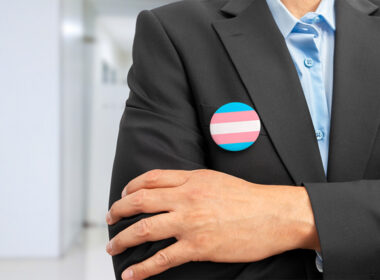The Australian Law Reform Commission (ALRC) has initiated a pivotal inquiry into Australia's surrogacy laws, signalling a potential shift in this complex and evolving legal landscape.
The inquiry aims to address the intricate web of legal, ethical, and medical considerations surrounding surrogacy, a practice that offers hope to many individuals and couples facing infertility. As ALRC President, the Hon. Justice Mordecai Bromberg stated, “Surrogacy in Australia brings together issues of law, medicine, technology, ethics and human rights, and a review of surrogacy laws requires sensitivity, nuance and expertise,” highlighting the delicate nature of the inquiry and the need for a balanced approach.
For many, surrogacy represents a last or only resort to parenthood. However, in Australia, the practice is legally restricted to altruistic arrangements, creating a significant barrier for those seeking to build families.
A history of complexity and a patchwork of inconsistencies
The landscape of surrogacy in Australia has been marked by both progress and legal challenges. The late 1980s, a period of rapid advancement in assisted reproductive technologies (ART) like IVF, brought these challenges sharply into focus. In 1988, the birth of Alice Kirkman in Melbourne—Australia’s first and the world’s second IVF surrogacy baby—sparked public interest and became a catalyst for legislative responses. Victoria, grappling with the ethical implications, swiftly outlawed commercial surrogacy, reflecting a deep-seated concern about its potential exploitation. Queensland took a more stringent approach and banned all forms of surrogacy, including those conducted overseas. Amidst all of this, Stephen Page, a Brisbane lawyer destined to become a leading voice in the field, took on his first surrogacy case, setting the stage for his decades-long involvement in this area.
Over the past 37 years, Page, a Director at Page Provan Family and Fertility Lawyers in Brisbane, has witnessed the evolution of surrogacy law, advising on over 2,000 journeys across Australia and 39 countries. His own experience with surrogacy, involving his husband and a close friend as a surrogate, revealed the harsh realities of the process. Their journey, spanning over four years, was fraught with financial strain, medical complications, a miscarriage, and an ectopic pregnancy. “My daughter almost died in childbirth,” he recounts, and to add to this, after the birth of his daughter, the hospital disregarded Page as a parent. “The [hospital] executive turned to the surrogate and said, ‘the hospital lawyer said that you are the only parent,’ at which point I’m left completely invisible.”
It’s a familiar story for those navigating altruistic surrogacy, a blunt reminder of the legal complexities and emotional toll that often accompany the process.
A decade after the House of Representatives Standing Committee on Social Policy and Legal Affairs Inquiry into the Regulatory and Legislative Aspects of Surrogacy Arrangement, Australia’s surrogacy laws remain a patchwork of inconsistencies and discriminatory practices, hindering intended parents and leaving children in a precarious legal limbo. Page notes, while some progress has been made, particularly in reducing discrimination, significant hurdles persist, demanding urgent reform.
He says one of the most glaring issues is the lack of uniform surrogacy laws across states and territories. Western Australia, for instance, prevents single men and same-sex couples from entering into surrogacy arrangements, a law that Page anticipates will be repealed soon.
But the state continues to stand out by prohibiting reimbursement for surrogate travel and accommodation—a stark contrast to the accepted practice in altruistic surrogacy regimes like Canada. This discrepancy creates a legal minefield for those seeking surrogacy, even potentially criminalising arrangements made overseas that would be perfectly legal elsewhere.

The issue of interstate surrogacy further complicates matters. In Tasmania, intended parents must both be Tasmanian residents. “The smallest, poorest state and oldest state, you can’t have a surrogate from interstate, it’s crazy … if your sister leaves Launceston to move to Melbourne for a job, and your sister offers to be a surrogate, well, tough luck. You can’t do it in Tasmania,” Page says pointedly.
While acknowledging interstate arrangements, South Australia has yet to establish the necessary legal framework, rendering such agreements unlawful. Despite constitutional provisions for recognising interstate orders, Victoria insists on its own court-issued registration orders, adding unnecessary delays and burdens.
The ACT recognises parentage orders for children born through overseas commercial surrogacy. Still, it retains the potential for prosecution without a time limit, leaving families vulnerable to legal action years later. Meanwhile, New South Wales’s recent legislative changes, intended to simplify recognition of overseas surrogacy, are proving far more restrictive than anticipated. The requirement for “exceptional circumstances” and the narrow definition of a “surrogacy arrangement” create significant barriers, particularly for cases involving international arrangements where legal frameworks differ.
These inconsistencies not only create logistical nightmares for intended parents but also jeopardise the legal security of children born through surrogacy. The emphasis on rigid legal definitions and jurisdictional boundaries often overshadows the fundamental right of a child to a recognised identity, as enshrined in international conventions.
However, despite legal efforts to regulate and criminalise overseas commercial surrogacy, prosecutions have yet to be made – highlighting the disconnect between law and practice. “In Australia, no one has ever been prosecuted for undertaking overseas commercial surrogacy,” Page notes, “Between 2009 and 2021, more than 2,327 Australian children were born overseas through surrogacy. Many of the parents come from Australian jurisdictions where their surrogacy journeys were apparently unlawful.”
The shifting demographics and the urgency for reform
Initially dominated by heterosexual couples, surrogacy in Australia now serves a broader demographic, including gay couples, single individuals, and lesbian couples requiring both egg and sperm donors. “There will always be people who can’t have children,” Page asserts, citing that “Medical infertility affects one in six couples, so it’s the third most common disease after heart [disease] and cancer.”
While domestic surrogacy exists, a significant portion of Australians pursue surrogacy overseas. Ironically, the Surrogacy Act 2010, a NSW law intended to deter overseas surrogacy and protect vulnerable women in developing countries inadvertently fuelled its growth. “It was what I would describe as an own goal,” Page says.
“The result was there was such a firestorm of publicity that all these people who never knew that they could become parents suddenly realised that they could.” The numbers speak for themselves: according to the Department of Home Affairs, international surrogacy births surged from fewer than 10 in 2010 to 266 in 2012, with a significant portion occurring in India. Since then, the average number of international surrogacy births remains typically around 200 per year. In contrast, just 100 domestic surrogacy births were recorded in 2021.
The news of Baby Gammy in 2014 captured the attention of Australians, ignited debate, and exposed the darker side of commercial surrogacy. This story involved an Australian couple and a Thai surrogate, Pattaramon Chanbua, allegedly requesting an abortion upon learning one of the twins had Down syndrome, and their subsequent decision to take only the healthy twin exposed the vulnerabilities of surrogate mothers and the potential for exploitation.
Alice Clarke (previously Kirkman) told ABC’s 7.30 Report in 2015 that prior to the Baby Gammy case, she was against commercial surrogacy and believed altruistic arrangements were the only way. “It really made me re-evaluate my stance on things because commercial surrogacy is going to happen no matter what, and we may as well have it in Australia so we can regulate it,” she said.
“Unless the woman has a connection with that couple or the intended parent … No woman would put their hand up where there’s maternal mortality risk and everything else associated with pregnancy if she’s not getting compensated…”
Page argues that Australia’s contradictory surrogacy laws push intended parents overseas, leaving children in legal limbo. He criticises the altruistic model’s inherent unfairness, where professionals involved in surrogacy arrangements, such as lawyers, doctors, embryologists, nurses, counsellors, and judges, are all compensated, but surrogates, bearing the most significant risks, are not.
“[U]nless the woman has a connection with that couple or the intended parent … No woman would put their hand up where there’s maternal mortality risk and everything else associated with pregnancy if she’s not getting compensated for that when everyone else is,” Page says. He argues that it’s time to acknowledge the reality: women who act as surrogates deserve compensation, advocating for regulated compensation to prevent exploitation.
He also highlights the unnecessary hardship caused by ambiguous parentage laws, often leaving children in legal limbo for months. While his parentage order took three months, he says this was due to his professional knowledge, and most parents struggle with the process.
Under existing case law relating to the parentage of a child born through surrogacy, the biological father might be recognised as a parent under the Family Law Act but not under state or territory law. This necessitates a lengthy court process, often dragging on for up to nine months, mirroring the length of the pregnancy itself. While parenting plans offer a temporary solution, they fail to address the fundamental instability of this situation.
Contrast this with Canada, an altruistic regime that adopts a varied approach. While some provinces require court orders, others, like British Columbia, Manitoba, and Ontario, offer a streamlined statutory process. Even those provinces relying on court orders manage to finalise parentage within two to four weeks, with Alberta achieving this in two to three business days.
Page advocates for automated parentage processes for non-contentious cases, similar to Canada’s streamlined system, and the implementation of pre-conception or pre-birth orders – establishing legal parentage before the child’s birth, providing clarity and security for all parties involved.
The ALRC’s inquiry aims to address these inconsistencies and complexities. The commission intends to consult with a diverse range of stakeholders, including surrogates, intended parents, and individuals born from surrogacy arrangements. A comprehensive report is due to the Attorney-General by 29 July 2026.




